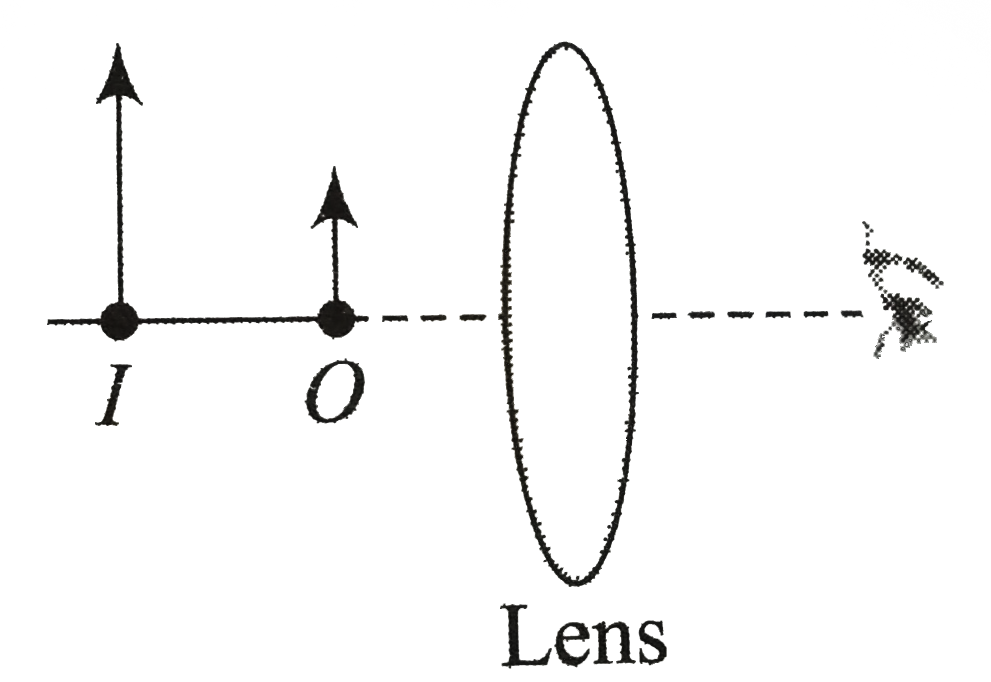A convex lens of focal length 10 cm. is used as a magnifying lens.
What will be the magnification?
To find the magnification produced by a convex lens of focal length 10 cm when used as a magnifying lens, we can use the formulas for magnification at the near point and the far point.
1. Identify the Focal Length (f):
The focal length of the convex lens is given as f=10cm.
2. Understand the Near Point (d):
The near point distance (d) for a normal human eye is approximately d=25cm.
3. Calculate Magnification for the Near Point:
The formula for magnification (M) when using a magnifying lens at the near point is:
M=1+df
Substituting the values:
M=1+2510
Simplifying this:
M=1+2.5=3.5
4. Calculate Magnification for the Far Point:
The formula for magnification when using the lens at the far point is:
M=df
Again substituting the values:
M=2510
Simplifying this:
M=2.5
5. Conclusion:
The magnification for the near point is 3.5 and for the far point is 2.5. Therefore, if the question does not specify, both magnifications should be provided.
Final Answer:
- Magnification at the near point: 3.5
- Magnification at the far point: 2.5
The focal length of the convex lens is given as f=10cm.
The near point distance (d) for a normal human eye is approximately d=25cm.
The formula for magnification (M) when using a magnifying lens at the near point is:
M=1+df
Substituting the values:
M=1+2510
Simplifying this:
M=1+2.5=3.5
The formula for magnification when using the lens at the far point is:
M=df
Again substituting the values:
M=2510
Simplifying this:
M=2.5
The magnification for the near point is 3.5 and for the far point is 2.5. Therefore, if the question does not specify, both magnifications should be provided.
- Magnification at the near point: 3.5
- Magnification at the far point: 2.5
Topper's Solved these Questions
- RAY OPTICSBOOK - AAKASH SERIESCHAPTER - RAY OPTICSEXERCISE - EXERCISE (LONG ANSWER QUESTIONS )
9 Videos
- RAY OPTICSBOOK - AAKASH SERIESCHAPTER - RAY OPTICSEXERCISE - EXERCISE (SHORT ANSWER QUESTIONS )
24 Videos
- PRACTICAL PHYSICSBOOK - AAKASH SERIESCHAPTER - PRACTICAL PHYSICSEXERCISE - LECTURE SHEET LEVEL-II (ADVANCED) Linked Comprehension Type Questions
4 Videos
- SEMICONDUCTOR DEVICESBOOK - AAKASH SERIESCHAPTER - SEMICONDUCTOR DEVICESEXERCISE - EXERCISE - III
3 Videos
Similar Questions
The magnification of an object plac ed in front of a convex lens of focal length 20 cm is +2. to obtain a magnification of -2. the object will have to be moved a distance equal to
View SolutionA thin convex lens of focal length 5 cm is used as a simple microscope by a person with normal near point (25cm) . What is the magnifying power of the microscope.?
View SolutionA convex lens of focal length 30 cm produces 5 times magnified real image of an object. What is the object distance?
View SolutionAn object of height 2 cm is placed in front of a convex lens of focal length 20 cm at a distance of 15 cm from it. Find the position and magnification of the image.
View SolutionA convex lens of focal length 10 cm and imag formed by it, is at least distance of distinct vision then the magnifying power is
View SolutionA convex lens of focal length 80 cm and a concave lens of focal length 50 cm are combined toghether. What will be their resulting power ?
View SolutionWhat is the focal length of a convex lens of focal length 30cm in contact with a concave lens of focal length 20cm. Is the system a converging or a diverging lens ? Ignore thickness of the lenses.
View SolutionA man wishes to view an object through a convex lens of focal length 10cm. The final image is to be eret and magnified 2 times. How far from the object must he hold the lens?

View SolutionA magnifying lens has a focal length of 10 cm. (a) Where should the object be placed if the image is to be 30 cm from the lens ? (b) What will be the magnification ?
View SolutionA dip circle is at right angles to the magnetic meridian. What will be the apparent dip ?
View Solution
